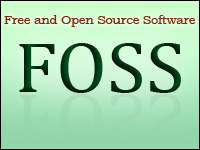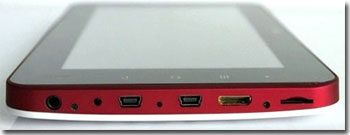
The recently announced Spark tablet might prove to be the first Linux-running open source tablet fully capable of being modded by users.

It has an open Linux stack on unlocked hardware, and it will come with an open content and services market.
The Spark will come under the GNU General Public License (GPL) from its inception.
Pricing will be about US$265, according to KDE developer Aaron Seigo. The Spark will be offered as a device made for customization and project-specific integration.
“This is an interesting project in the sense that it’s changing the way individuals would interact with their device,” Jeff Orr, a senior practice director at ABI Research, told LinuxInsider.
“This type of solution may be useful for vertical case uses,” Orr continued. “I think it’s going to cater to the hobbyist, those who are going to maybe look to introduce computing into a system or a physical service people interact with.”
What Makes Up the Spark
The Spark has two USB ports, a microSD slot, a 3.5 mm audio jack, a 7-inch multitouch capacitive resistor screen with 800 by 480 resolution, WiFi and a 1.3 MP front-facing webcam.
It’s based on a 1 GHz AMLogic ARM Cortex-A9 CPU, and it has a Mali 400 graphics processing unit, 512 MB of RAM and 4GB of storage.
Users are free to modify the device as they see fit.
The Spark runs Mer, which was built to provide a free alternative to the Maemo OS. It was based on Ubuntu 9.04.
Mer was abandoned in favor of Meego but was revived in 2011 after Nokia walked out of its partnership with Intel, abandoning Meego.
The Spark uses the KDE Plasma Active user interface. It will also link up to OwnCloud open source hosting services, the Kolab groupware solution and Kontact, the integrated personal information manager of KDE.
“What’s really being promoted here is Plasma Active 2, which is an application development framework built on top of Linux and one of the variants is Meego,” Orr stated.
Current plans are to begin shipping the device in May.
What You Can Do With the Spark
Purchasers will be able to use the standard Mer repositories as well as the Open Build Service. This service is an open and complete distribution development platform designed to encourage compilation of packages for multiple Linux distributions. However, this requires users to be technically adept and familiar with Linux.
For those not as technically oriented, the developers of Spark will provide an add-on store offering books, applications, desktop widgets and services. The store is not software-specific, and its back end will be released as open source once the design has been proven and it has been implemented in production.
Devs should use QtQuick to write apps for the Spark, although the device will support non-Qt apps. The Spark also houses KDE libraries, including the Plasma framework.
Will the Spark Sputter or Start a Fire?
The Spark could be hampered by its very openness.
“It appears to be targeted at the open source community, a group that has been losing voice and has never seemed that willing to pay for much of anything,” Rob Enderle, principal analyst at the Enderle Group, told LinuxInsider. “This actually lowers the revenue potential substantially.”
As a product focused on techies, it would probably struggle because “the [tablet] market is defined by products that focus tightly on the consumer experience, are complete when sold, and are well-marketed,” Enderle pointed out. “This product fails to meet any of these requirements.”
“This [Spark project] is a group of individuals that have been working on a software interface and an application framework through an extension of Qt,” ABI’s Orr remarked. “There are hundreds and thousands of this kind of programs out there.”
The story of another effort to bring a practical, openly hackable open source tablet device to the Maemo and Meego communities — the Cordia Open Tablet project, might prove to be a chilling harbinger of the Spark’s possible fate.
The developer behind the project couldn’t get a manufacturer to release the kernel source unless he ordered a large quantity of the devices or deposited a few thousand dollars up front. This scotched the developer’s production plans.



















































